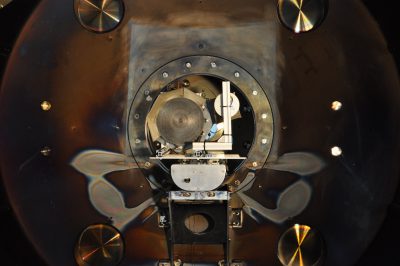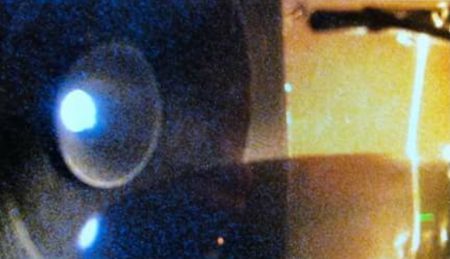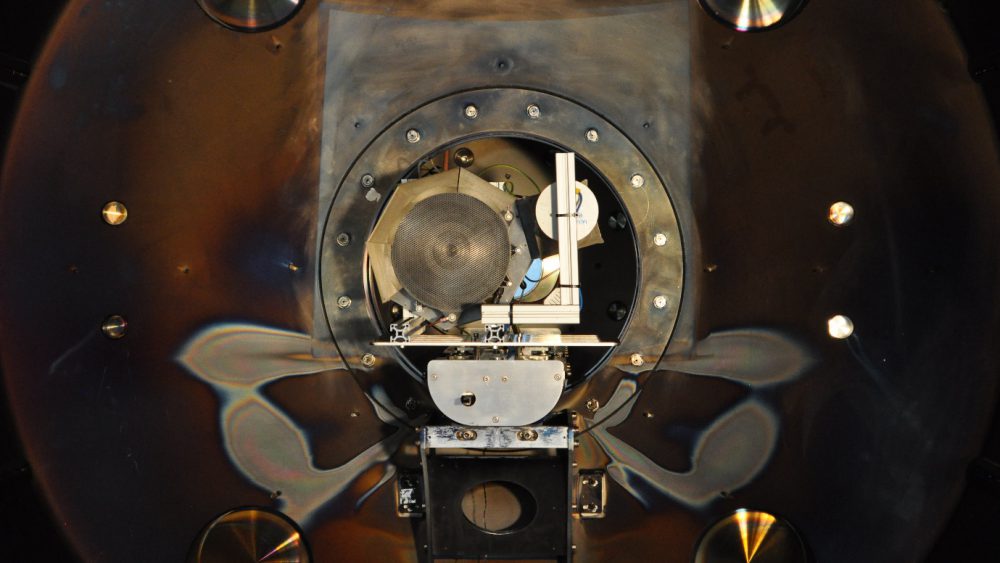With the arrival of the microwave power supply, we were finally ready to see if our neutraliser was working or not. We connected it up to the coaxial connector in the back of the neutraliser (orange cable). Despite ramping up the power and fuel flow rate, we were unable to achieve ignition. Later in the day, a miscommunication led to the accidental closure of the hatch between the two vacuum chambers, while the test platform was in between the two. Fortunately, the thruster and neutraliser escaped any damage, but the rail system was damaged and is now unusable.
 Microwave power supply
Microwave power supply 
 The full setup
The full setup The lab was out of action the next day, which turned out to be a blessing in disguise, as we met up and were able to figure out why the neutraliser failed to light. By using a hall probe, a device which measures magnetic fields, we realised that the magnetic arrangement was not producing the field we expected. Our magnetic setup was made up of many small magnets, arranged into arrays of 96 magnets each, but the way we had placed them meant that the magnetic charges were cancelling each other out. Essentially, we had been trying to ignite without any magnetic field.
Putting them in in the right orientation proved to be a challenging task, because the magnets naturally wanted to repel each other. It required 4 of us to hold them in place while moving the other components in (pictured). Fortunately, once they were in, the insulation and PTFE kept them in place.
 Positioning the magnets
Positioning the magnets With the issue now resolved, we reconvened at the vacuum chamber the following day. We were still able to test in the smaller chamber, although the vacuum formed in this chamber would not be as good as one in the main chamber. Despite this we were able to ignite it! We all felt a huge sense of accomplishment and pride, as this was the culmination of nearly 7 months of work. We spent the rest of the day experimenting with different input powers and fuel flow rates, to try and find the best performing conditions for the neutraliser, but by igniting it we had achieved our primary goal! Hopefully in the next few weeks we will be able to try out some other configurations with our various antennae and orifice plates, to try and figure out which configuration performs best.
We setup up a webcam in the vacuum chamber to capture the ignition. A screenshot from the feed is shown below. You can see the overall setup with the plasma from the neutraliser. The electron plume is visible between the neutraliser and the anode plate.
 The overall setup, with the electron plume visible.
The overall setup, with the electron plume visible.Here are the highlights of the video:
Marcus Collier-Wright


